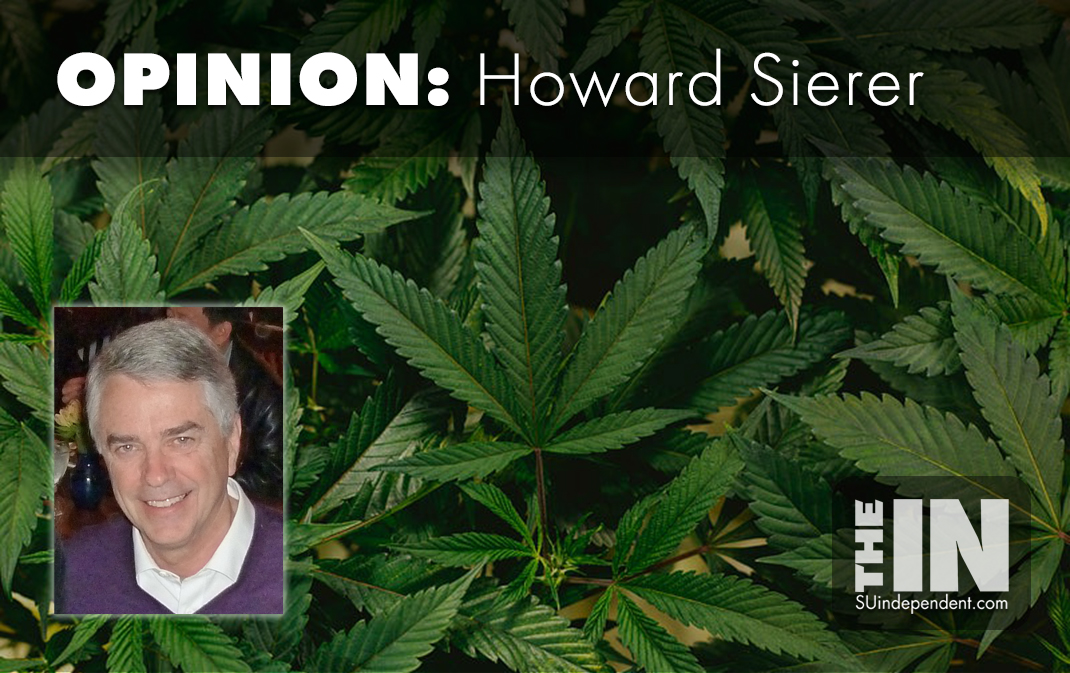
Marijuana: Who You Gonna Believe?
– By Howard Sierer –
When it comes to the oft-touted medical benefits of marijuana, who should we believe, the marijuana industry and the 17.3% of Americans ages 35 to 50 who used it in the last month or Dr. Bertha Madras?
Dr. Madras is a Professor of Psychobiology at the Harvard Medical School and directs the Laboratory of Addiction Neurobiology at McLean Hospital. Her laboratory has focused on translational research, neurobiology of therapeutic and addictive substances, brain imaging, and medications development. She served as Deputy Director for Demand Reduction in the White House Office of National Drug Control Policy.
Given her extensive study of addictive substances, the World Health Organization asked her in 2015 to do a detailed review of cannabis and its medical uses. The 41-page report documented scant evidence of marijuana’s medicinal benefits and reams of research on its harms, from cognitive impairment and psychosis to car accidents.
Dr. Madras says she has reviewed “every single case of therapeutic indication for marijuana—and there are over 100 now that people have claimed—and I frankly found that the only one that came close to having some evidence from randomized controlled trials was the neuropathic pain studies.” For other types of pain, and for all other conditions, there is no strong evidence from high-quality randomized trials to support its use.
The vast amount of scientific literature on marijuana runs counter to much of what Americans hear in the media. For example, Dr. Madras says the “addiction potential of marijuana is as high or higher than some other drugs,” especially for young people. About 30% of those who use cannabis have some degree of a use disorder. By comparison, only 13.5% of alcohol drinkers are estimated to be dependent on alcohol.
One or two alcoholic drinks will cause only mild inebriation, while “most people who use marijuana are using it to become intoxicated and to get high.” Academic outcomes and college completion rates for young people are much worse for those who use marijuana than for those who drink.
One of the biggest differences between the two substances is how the body metabolizes them. A drink will clear your system within a couple of hours. “You may wake up after binge drinking in the morning with a headache, but the alcohol is gone.” By contrast, “marijuana just sits there and sits there and promotes brain adaptation.”
Dr. Madras’ lab showed without doubt that marijuana’s levels in the blood and brain don’t correspond: brain levels are much higher than blood levels. “They’re two to three times higher, and they persist once blood levels go way down.” Even if people quit using pot, “it can persist in their brain for a while.”
Hence marijuana does more lasting damage to the brain than alcohol, especially at the high potencies being consumed today. Levels of THC – the main psychoactive ingredient in pot – are four or more times as high as they were 30 years ago. That heightens the risks, which range from anxiety and depression to impaired memory and cannabis hyperemesis syndrome—cycles of severe vomiting caused by long-term use.
Further, there’s mounting evidence that cannabis can cause schizophrenia. The link between marijuana and schizophrenia fits all six criteria that scientists use to determine causality, including the strength of the association and its consistency. A large-scale study last year that examined health histories of some 6.9 million Danes between 1972 and 2021 estimated that up to 30% of young men’s schizophrenia diagnoses could have been prevented had they not become dependent on pot. She notes that “users of other potent recreational drugs develop chronic psychosis at much lower rates.”
Despite the Biden administration’s repeated claim that it follows the science, it is moving to reclassify marijuana as a less dangerous Schedule III drug – on par with anabolic steroids and Tylenol with codeine – which would provide tax benefits and a financial boon to the pot industry.
Dr. Madras thinks this would be a colossal mistake. “It’s a political decision, not a scientific one and it’s a tragic one.” She says the rescheduling would send a cultural signal that marijuana use is normal and she worries that “it sets a precedent for the future.”
The next time you hear politicians bemoaning the tragic effects of drug abuse and proposing ever-more funding for rehabilitation programs, remember the science…and Dr. Bertha Madras.




> Even if people quit using pot, “it can persist in their brain for a while.”
I sure wish this was true!